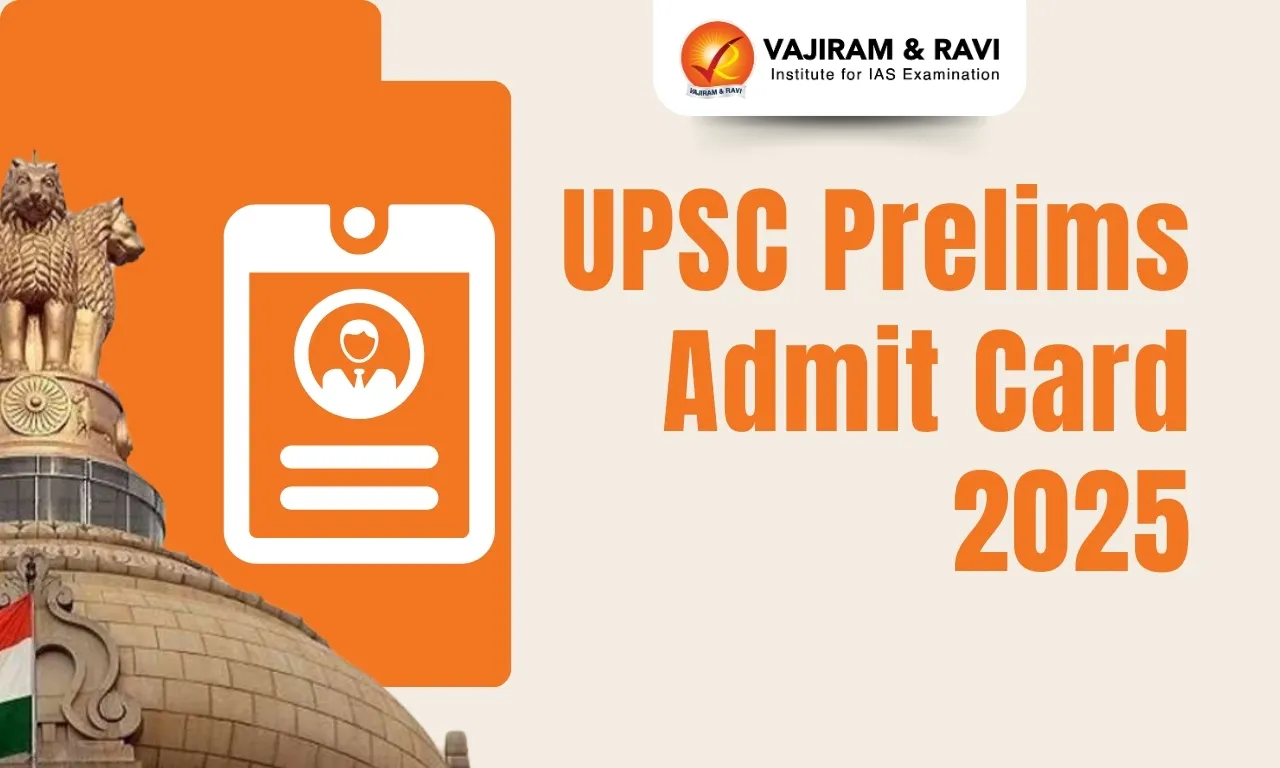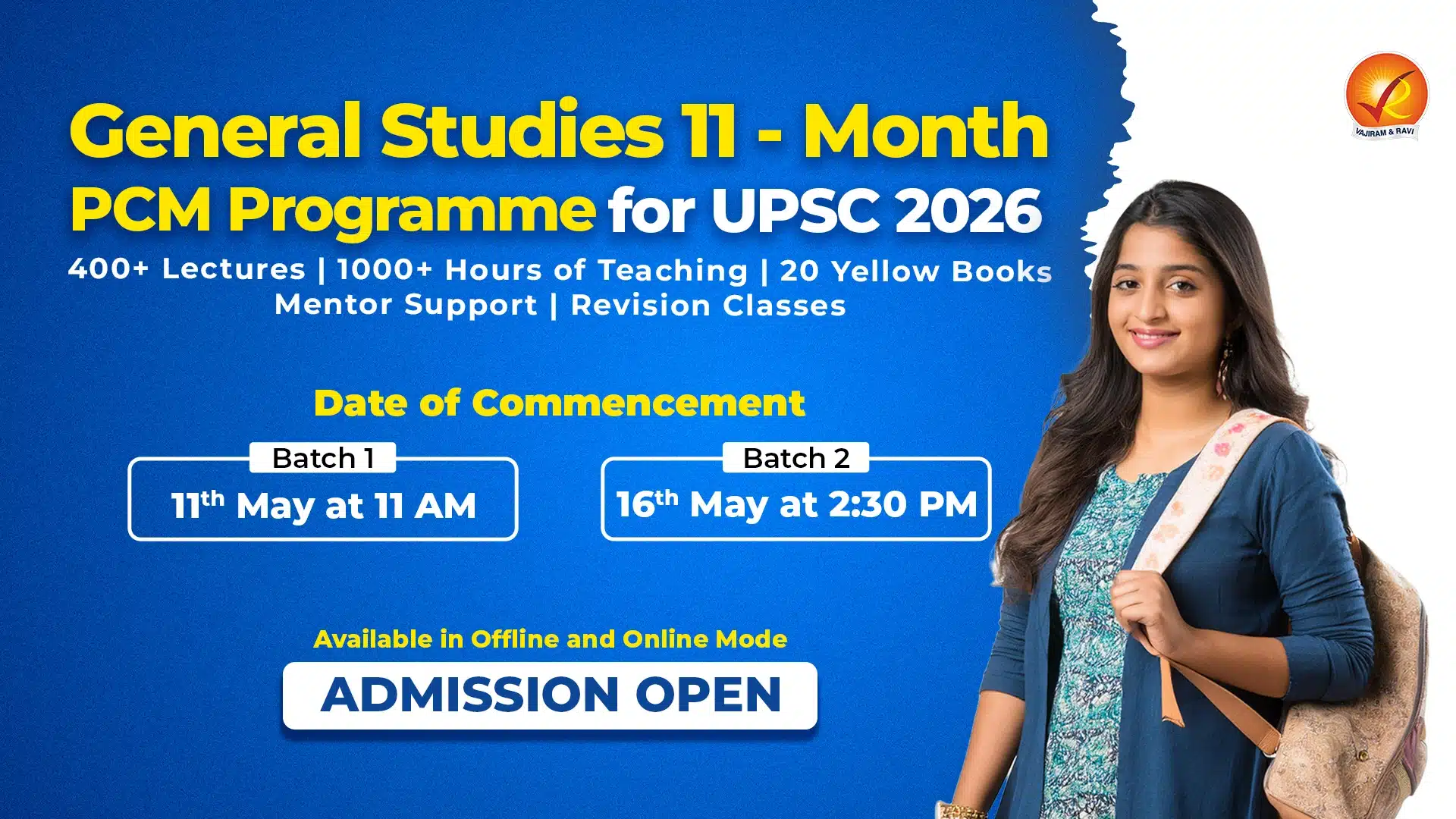Ancient History Previous Year Questions for UPSC Prelims and Mains play an important role in the Civil Services Examination as it helps the aspirants test their knowledge about the Ancient History Subject. The Ancient History UPSC Questions cover a wide range of topics like Indus Valley Civilization, Vedic and Post Vedic Period, Mauryan and Post Mauryan Era, Gupta Dynasty and various other kingdoms and dynasties that have helped in shaping the course of Indian Ancient History.

UPSC Ancient History Questions
Every year, atleast 5 to 6 questions are asked from the Ancient History of India in the UPSC Preliminary Examination. Practising the Ancient History Previous Year Questions can help you understand the exam pattern, types of questions asked, and the level of difficulty. This insight can guide your preparation strategy and help you focus on the most relevant topics. By analysing previous year UPSC Ancient History questions, you can identify which topics within ancient history are frequently asked. This enables you to prioritise your study efforts and concentrate on the areas that have a higher likelihood of being questioned.
Ancient History Previous Year Questions for UPSC Prelims
Download PDF: Ancient History PYQs PDF
Q1: Regarding the Indus Valley Civilization, consider the following statements:
- It was predominantly a secular civilization and the religious element, though present, did not dominate the scene,
- During this period, cotton was used for manufacturing textiles in India.
Which of the statements given above is/are correct?
(a.) 1 only
(b.) 2 only
(c.) Both 1 and 2
(d.) Neither 1 nor 2
Answer: (c)
Q2: Which of the following characterises/ characterises the people of Indus Civilization?
- They possessed great palaces and temples.
- They worshipped both male and female deities.
- They employed horse-drawn chariots in warfare.
Select the correct statement/ statements using the codes given below.
(a) 1 and 2 only
(b) 2 only
(c) 1, 2 and 3
(d) None of the statements given above is correct
Answer: (b)
Q3: The “dharma” and “rita” depict a central idea of ancient Vedic civilization of India, In this context, consider the following statements: (2011)
- Dharma was a conception of obligations and of the discharge of one’s duties to oneself and to others.
- Rita was the fundamental moral law governing the functioning of the universe and all it contained.
Which of the statements given above is/are correct?
(a.) 1 only
(b.) 2 only
(c.) Both 1 and 2
(d.) Neither 1 nor 2
Answer: (c)
Q4: The religion of early Vedic Aryans was primarily of
(a) Bhakti
(b) image worship and Yajnas
(c) worship of nature and Yajnas
(d) worship of nature and Bhakti
Answer: (c)
Q5: Which one of the following pairs does not form part of the six systems of Indian Philosophy?
- Mimamsa and Vedanta
- Nyaya and Vaisheshika
- Lokayata and Kapalika
- Sankhya and Yoga
Answer: (c)
Q6: The national motto of India, ‘Satyameva Jayate’ inscribed below the Emblem of India is taken from
- Katha Upanishad
- Chandogya Upanishad
- Aitareya Upanishad
- Mundaka Upanishad
Answer: (d)
Q7: Chaitra 1 of the national calendar based on the Saka Era corresponds to which one of the following dates of the Gregorian calendar in a normal year of 365 days?
- 22 March (or 21st March)
- 15th May (or 16th May)
- 31st March (or 30th March)
- 21st April (or 20th April
Answer: (a)
Q8: The Jain philosophy holds that the world is created and maintained by(2011)
(a.) Universal Law
(b.) Universal Truth
(c.) Universal Faith
(d.) Universal Soul
Answer: (a)
Q9: With reference to the history of ancient India, which of the following was/were common to both Buddhism and Jainism?
- Avoidance of extremities of penance and enjoyment
- Indifference to the authority of the Vedas
- Denial of efficacy of rituals
Select the correct answer using the codes given below :
(a) 1 only
(b) 2 and 3 only
(c) 1 and 3 only
(d) 1, 2 and 3
Answer: (b)
Q10: Lord Buddha’s image is sometimes shown with the hand gesture called ‘Bhumisparsha Mudra’. It symbolises
(a) Buddha’s calling of the Earth to watch over Mara and to prevent Mara from disturbing his meditation
(b) Buddha’s calling of the Earth to witness his purity and chastity despite the temptations of Mara
(c) Buddha’s reminder to his followers that they all arise from the Earth and finally dissolve into the Earth, and thus this life is transitory
(d) Both the statements (a) and (b) are correct in this context
Answer: (b)
Q11: Which of the following statements is/are applicable to Jain doctrine?
- The surest way of annihilating Karma is to practise penance.
- Every object, even the smallest particle, has a soul.
- Karma is the bane of the soul and must be ended.
Select the correct answer using the codes given below.
(a) 1 only
(b) 2 and 3 only
(c) 1 and 3 only
(d) 1, 2 and 3
Answer: (d)
Q12: Some Buddhist rock-cut caves are called Chaityas, while the others are called Viharas. What is the difference between the two?
(a) Vihara is a place of worship, while Chaitya is the dwelling place of the monks
(b) Chaitya is a place of worship, while Vihara is the dwelling place of the monks
(c) Chaitya is the stupa at the far end of the cave, while Vihara is the hall axial to it
(d) There is no material difference between the two
Answer: (b)
Q13: Which one of the following describes best the concept of Nirvana in Buddhism?
(a) The extinction of the flame of desire
(b) The complete annihilation of self
(c) A state of bliss and rest
(d) A mental stage beyond all comprehension
Answer: (c)
Q14: Which of the following Kingdoms were associated with the life of the Buddha?
- Avanti
- Gandhara
- Kosala
- Magadha
Select the correct answer using the code given below.
- 1, 2 and 3
- 2 and 4
- 3 and 4 only
- 1, 3 and 4
Answer: (d)
Q15: Political Organisation, economy, social organisation, Development of Science- major contributors, during the ancient times.
With reference to the guilds (Shreni) of ancient India that played a very important role in the country’s economy, which of the following statements is /are correct?
- Every guild was registered with the central authority of the State and the king was the chief administrative authority on them.
- The wages, rules of work, standards and prices were fixed by the guild.
- The guild had judicial powers over its own members.
Select the correct answer using the codes given below:
(a) 1 and 2 only
(b) 3 only
(c) 2 and 3 only
(d) 1, 2 and 3
Answer: (d)
Q16: With reference to the scientific progress of ancient India, which of the statements given below are correct?
- Different kinds of specialised surgical instruments were in common use by the 1st century AD.
- Transplant of internal organs in the human body had begun by the beginning of 3rd century AD.
- The concept of sine of an angle was known in 5th century AD.
- The concept of cyclic quadrilaterals was known in the 7th century AD.
Select the correct answer using the codes given below :
(a) 1 and 2 only
(b) 3 and 4 only
(c) 1, 3 and 4 only
(d) 1, 2, 3 and 4
Answer: (c)
Q17: The Chinese traveller Yuan Chwang (Hiuen Tsang) who visited India recorded the general conditions and culture of India at that time. In this context, which of the following statements is/are correct?
- The roads and river-routes were completely immune from robbery.
- As regards punishment for offences, ordeals by fire, water and poison were the instruments for determining the innocence or guilt of a person.
- The tradesmen had to pay duties at ferries and barrier stations.
Select the correct answer using the codes given below.
(a) 1 only
(b) 2 and 3 only
(c) 1 and 3 only
(d) 1, 2 and 3
Answer: (b)
Ancient History PYQs for UPSC Mains
Ancient history is a significant part of the UPSC History syllabus, but the questions asked in the Mains exam are selective and require a deep understanding of the subject. Here is a list of Ancient History Previous Year Questions for UPSC Mains Examination:
- Discuss the main contributions of the Gupta period and the Chola period to Indian heritage and culture. [2022]
- Analyse the salience of ‘sect’ in Indian society vis-a-vis caste, region and religion.[2022]
- Evaluate the nature of Bhakti Literature and its contribution to Indian culture. [2021]
- Persian literary sources of mediaeval India reflect the spirit of the age. Comment. [2020]
- Highlight the Central Asian and Greco-Bactrian elements in Gandhara art. [2019]
- Assess the importance of the accounts of the Chinese and Arab travellers in the reconstruction of the history of India. [2018]
- Safeguarding the Indian art heritage is the need of the moment. Discuss. [2018]
- The Bhakti movement received a remarkable re-orientation with the advent of Sri Chaitanya Mahaprabhu. Discuss. [2018]
- How do you justify the view that the level of excellence of the Gupta numismatic art is not at all noticeable in later times? [2017]
- Krishnadeva Raya, the King of Vijayanagar, was not only an accomplished scholar himself but was also a great patron of learning and literature. Discuss. [2016]
- Early Buddhist Stupa-art, while depicting folk motifs and narratives successfully expounds Buddhist ideals. Elucidate. [2016]
- Mesolithic rock cut architecture of India not only reflects the cultural life of the times but also a fine aesthetic sense comparable to modern painting. Critically evaluate this comment. [2015]
- The ancient civilization in the Indian sub-continent differed from those of Egypt, Mesopotamia and Greece in that its culture and traditions have been preserved without a breakdown to the present day. Comment. [2015]
Last updated on April, 2025
→ UPSC Notification 2025 was released on 22nd January 2025.
→ The UPSC Vacancy 2025 were released 1129, out of which 979 were for UPSC CSE and remaining 150 are for UPSC IFoS.
→ UPSC Admit Card 2025 is expected to release in first week of May for CSE Prelims Exam 2025.
→ The UPSC Prelims 2025 is scheduled to be conducted on 25th May 2025 and UPSC Mains 2025 will be conducted on 22nd August 2025.
→ Apply once through it and aspirants can apply for various government exams conducted by UPSC.
→ The UPSC Selection Process is of 3 stages-Prelims, Mains and Interview.
→ UPSC Result 2024 is released with latest UPSC Marksheet 2024. Check Now!
→ UPSC Toppers List 2024 is released now. Shakti Dubey is UPSC AIR 1 2024 Topper.
→ Also check Best IAS Coaching in Delhi
UPSC Ancient History FAQs
Q1. Where can I find Ancient History Questions for UPSC Mains?+
Q2. How to prepare for Ancient History Questions in UPSC Mains?+
Q3. How many questions are there in ancient history for UPSC?+
Q4. Is ancient history asked in UPSC Mains?+
















